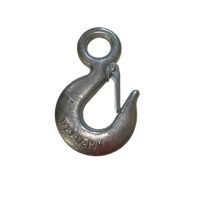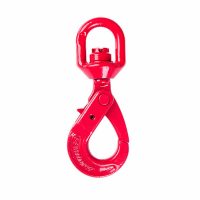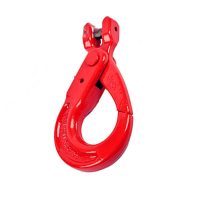Rigging hooks are load lifting, towing, or other heavy-duty application rigging accessories, they are available with a variety of end connectors, to the fast and easy attachment for rigging applications with a different design, strength, and capacity.
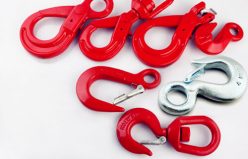
Rigging hooks come in a variety of styles and capacities for a number of uses, including hoist hook, slip hook, grab hook, clevis hook, slings hooks, and self-locking hook, etc, but there are main ways a lifting hook or sling hook can be attached to the sling: eye hooks, clevis hook and swivel hooks, but there are more types of rigging hooks if differ in hooks opening design, strength, and capacity.
Types of Rigging Hooks
- Eye Hooks
Eye hooks are the permanent connections to the slings, they are very flexible to position the hooks and attach them to the load.
- Clevis Hooks
Features a U shaped clevis pin or bolt to allows shackles, chain, or other rigging accessories to load secure connections.
- Swivel Hooks
There are two types of swivel hooks, swivel hook for positon and swivel hook with bearing. The swivel hook for position is used to position the hook onto the pick point, not designed to load while rotating.
Swivel hook with bearing has a bearing on the top and allows the hook to rotate while loading to prevent twisting the lifting slings.

- Grab Hooks
Grab hooks have a special shallow throat opening to keep a chain from slipping off the hook, it is commonly used to load binding, shorten or hold as an end on a transport chain. The throat allows for easy and secure engages the chain between the links for quick and non-slip handling.
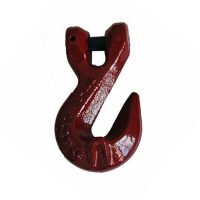
- Slip Hooks
Slip hooks have a wider throat than the grab hook, also sometimes called a sling hook due to its wider throat. Most of the time, it has a latch to keep the attached object security.
- Hoist Hooks
Hoist hooks also are known as hoist lifting hook, is designed for attaching to the end of wire rope slings, chain slings, complete with a safety latch, to lift objects quickly by crane and land them securely without using of shackles.
- Self-locking Hooks
Self-locking hooks can prevent the hook from being accidentally dislodged when under heavy load.
4 terminology you should know for choosing the right rigging hook.
- Grades
Grades 30, 43, and 70, Grade 80 and Grade 100 are the tensile strength of steel, Grade 80 and Grade 100 can be used for overhead lifting, but grade 100 can provide approximately 25% high working load limits than Grade 80.
Grade 30, 43, and 70 only can be used for load securement equipment, please read this article for more about chain Grade.
- Materials
Commonly we supply carbon steel, alloy steel, and stainless steel of hooks for lifting applications. carbon steel hooks for non-overhead lifting purposes, such as towing, pulling, or load securement, alloy steel hooks can be used for overhead lifting applications
as for stainless steel hooks have better corrosion resistance to seawater, chemicals, and acids, particularly for marine environments, see this post for more about rigging accessories materials.
- Working Load Limit
Sometimes also called Safe Working Load, short for W.L.L, or SWL. it is a maximum load rated that should be applied to the object. So the hooks’ Working Load Limit should never be exceeded or shock loads the chain or attachments. Choose the right W.L.L and proper sizes with chains in the throat of the hook, which commonly indicate the load information and dimensions.
- Minimum Breaking Strength
Minimum breaking strength is the minimum of force that lifting hooks were found to break, it divided by a safety factor(SF = MBL / WLL) equal the working load limit, usually, the carbon steel hoist hooks safety factor is 5:1, while the alloy steel hoist hooks safety factor is 4:1.
Click the article: 3 basics symbol You Must Know on your lifting rigging hardware for the knowledge.
If you are still not sure what kind of hooks you need for your application, please contact us to answer questions about any kind of rigging hooks.

